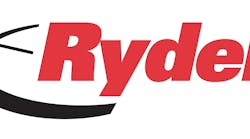Fleets are in the business of delivering goods and services. Uptime means everything. That is why mobile maintenance services can be an appealing option for a variety of fleets.
“Mobile maintenance brings day-to-day shop operations to fleets wherever their equipment is located,” says Jim Reed, vice president of truck service at Travel Centers of America (TA). “While trucks or trailers are sitting idle, mobile maintenance providers can perform the services necessary to improve uptime without any additional out-of-route timed travel expenses.” TA offers a variety of fuel and repair solutions for fleets, including mobile maintenance and roadside breakdown services.
In many instances, mobile maintenance is used to supplement a fleet’s existing maintenance operation.
“Mobile maintenance can assist a fleet in maintaining vehicles that are unable to get back to their own shops or outsourced providers,” says Drew Kortyna, TA’s senior director of mobile maintenance.
“Gone are the days of having to rely solely on maintenance shops open from 8 AM to 5 PM,” says Jenn Dixon, Ryder’s group director of mobile maintenance operations. “With Ryder Mobile Maintenance, fleets can simply schedule their maintenance on the days and times their vehicles are idle, including nights and weekends. With tight delivery windows and hours-of-service regulations, mobile maintenance offers a seamless experience that eases these challenges for fleets.” Ryder is a Miami-based provider of transportation and supply chain management products. Its certified technicians operate more than 300 fully equipped mobile maintenance vehicles in North America.
Supplementing with a mobile maintenance provider can also help fleets improve the productivity of their own in-house technicians.
“If resources are limited and things get backed up in a fleet’s shop, mobile maintenance can come out and free up the technicians to do more important things than basic preventive maintenance and minor repairs,” says Stephen Crane, vice president of TMcare operations at FleetNet America, a North Carolina-based provider of fleet maintenance and repair services.
In fact, Crane says some fleets opt to completely outsource maintenance to a mobile provider for that very reason. Other influential factors include convenience, reliability, predictability and flexibility.
The benefits of mobile maintenance prompted one fleet services provider to alter its business model. Indianapolis-based Dickinson Fleet Services was founded in 1997 with fixed shop locations. Ted Coltrain, executive officer, says the company’s vision was to evolve into a national independent maintenance provider to service larger fleets. Before long, Dickinson Fleet Services saw the opportunity to branch into mobile maintenance due to the high value fleets place on convenience.
“It was amazing how quickly our mobile maintenance model expanded across the country,” Coltrain says. With operations in 35 states, Dickinson services fleets from coast to coast with in-house technicians, along with its own fleet of 400-plus mobile service vehicles. Dickinson Fleet Services also operates 17 service shops.
“The convenience factor for fleets quickly spilled over to a cost-savings factor,” Coltrain adds. “Not having to pay a driver to get a truck to a shop is huge. Additionally, once the driver gets to the shop, there is often a lot happening that prevents a quick turnaround of the truck. That’s more downtime and cost.”
Fleets have also come to appreciate what Coltrain calls the compliance factor.
“A big challenge fleets have is addressing what the DOT [Department of Transportation] requires in terms of a DVIR [driver vehicle inspection report],” Coltrain says. “If a driver does a pre- or post-trip inspection on a truck and identifies an issue, the DOT says a technician has to review that and sign off. If it is an item that needs to be fixed, a technician needs to fix it. To complete the process, the driver must review the repair and validate everything with signature.
“Think about that process for a second,” Coltrain continues. “Without a technician who can come to a fleet’s facility to address this, it becomes very challenging for fleets to remain compliant. This process can also take trucks out of service because they have to go into the shop to be repaired.”
Also consider driver satisfaction. A growing challenge for fleets is finding and retaining drivers. Good preventive maintenance helps.
“Drivers write up things they think need to be fixed, but oftentimes the fleet doesn’t want take the vehicle out of service to fix them,” Coltrain says. “Then the driver gets frustrated, and sometimes ends up going to work someplace else. That’s a factor that has also driven the mobile [maintenance] piece of our business.”
Types of services
Fleets can look to a mobile maintenance provider for a variety of services.
Ryder, for example, says it offers customers the same diagnostic tools in their maintenance vehicles as they do in their traditional brick-and-mortar facilities.
“In addition to the traditional oil changes, brake service and inspections, Ryder mobile maintenance trucks also have all of the equipment needed to complete the industry’s most comprehensive 150-point preventive maintenance service as well as wide array of follow-up work,” Ryder’s Dixon says.
Almost any service that can be provided in-bay can be done by a quality mobile maintenance provider.
“TA Truck Service OnSITE offers a wide scope of maintenance services including DOT inspections, certified used truck and trailer inspections, brake services, diagnostics, tire services and installations, lubrication and more,” TA’s Kortyna says.
There are two primary types of mobile maintenance. The most common approach is when a mobile maintenance technician goes to the fleet’s facility to do the work. Another approach, though much less common, is for the mobile maintenance provider to go to the fleet’s location, pick up a vehicle and drive it back to the mobile maintenance service provider’s shop.
“In all actuality, mobile maintenance can pretty much be done anywhere and everywhere,” FleetNet’s Crane points out. The only real limitation would be a service that is not authorized – either by a regulatory body or simply the client – due to environmental or safety concerns, such as fluid changes or welding. That’s something fleets should consider when determining how and where services will be delivered.
Another option fleets should think about is emergency roadside service. While not preventive in nature, emergency roadside is definitely mobile. It’s another helpful option for fleets since it spares in-house technicians the burden of having to drop what they’re doing to go get a disabled vehicle back on the road.
Ideally, a fleet can look to the same provider for both mobile maintenance and emergency roadside services. This is especially practical when a fleet operates within a defined geographic location.
“That way the same mobile maintenance technician is likely being dispatched, one who is already familiar with the fleet,” Crane says.
Contracts, service delivery and data integration
A mobile maintenance provider’s ability to offer tailored solutions is an important consideration.
Ryder, for example, offers fleets a number of maintenance options to create customized solutions for various service delivery methods and commitment levels.
“No two customers are alike, and for that reason we have flexible contract options that allow fleets to select the type of maintenance they need and how they would like it to be provided,” Ryder’s Dixon says.
In terms of planning services, Crane says FleetNet typically follows OEM guidelines.
“If the fleet wants something different, we’ll work to accommodate them,” Crane says. “We just ask for it in writing so we have it on record. Also, different customers sometimes have different types of inspections they want done, and different states have their own unique sets of inspections. Regardless, everything is set in place per the fleet’s needs. We set it all up in our system so we can stay on top of it asset by asset.”
Crane points out that some mobile maintenance providers have their own technicians, which often necessitates some kind of timeline-based contract.
“It’s costly to hire your own technicians and invest in service trucks,” Crane says. “Some providers that use this approach naturally want some assurances that a certain amount of business will be coming in for a certain amount of time.”
FleetNet America, on the other hand, does not have its own technicians. It utilizes a third-party network of vetted service providers. Thus, FleetNet does not require a time-based contract.
“We do have a basic service document that outlines liabilities and so forth,” Crane says.
FleetNet handles service coordination with its third-party partners, as well as the invoicing and preventative maintenance (PM) sheets. All of that information is stored in FleetNet’s software system and can be shared online. Additionally, FleetNet’s system can integrate with the fleet’s own maintenance software system, i.e. Mitchell 1 or TMT Fleet Maintenance, as well as an accounts payable or receivable system.
This element of data integration is important.
“We VMRS-code the data so a fleet can get all of this maintenance history into its own software system,” Crane says. “This is really helpful if the fleet is using mobile maintenance as a supplement. Getting that outside data integrated with the service data happening inside its own shop helps fleets manage everything as one on the back end.”
A technology company called Decisiv is making data integration a lot easier. Decisiv’s cloud-based software and mobile apps are especially helpful for fleets having service work done by multiple vendors. Rather than having to check numerous sources to round up service information, Decisiv pulls it all together in one place, saving the fleet a lot of frustration and administrative time.
Decisiv announced integration with FleetNet several years ago. As a result, fleets using Decisiv can schedule and manage service events through FleetNet’s TMcare and Roadside programs. Decisiv has announced similar arrangements with other mobile service providers including Mack OneCall, Volvo Action Service (Volvo Uptime), Vehicare, Ryder MMC (Managed Maintenance Center) and AmeriQuest Road Rescue.
“An integration with Decisiv allows fleets and service providers to bring processes online,” says Pete Russo, vice president of platform services at Decisiv. “Fleets can submit a service request, check the status of open cases, approve estimates and send notes back and forth without picking up the phone or sending an email.”
With Decisiv SRM (service relationship management) integration, information that flows through Decisiv can be packaged and delivered to a fleet’s system of record in a reliable and consistent way.
“For example, in the case of FleetNet, all invoices created by FleetNet automatically pass through Decisiv and are recorded in a Fleet Management System like TMT,” Russo explains.
Picking the right vendor
There are some potential pitfalls when outsourcing any element of fleet maintenance efforts. Mobile maintenance is no exception.
Ryder’s Dixon says fleets must ensure the provider they select has properly trained technicians that can complete repairs with quality, safety and speed.
“Fleets want to be sure that the mobile maintenance provider will provide a highly skilled technician and a mobile truck that is equipped with an array of technologies to effectively diagnose, service and track the maintenance on the fleet,” Dixon says. “Mobile maintenance is a service delivery method that is highly customer focused. The provider you select should be one that can demonstrate a commitment to delivering a mobile solution that is tailored to your needs.”
Another key consideration to note is how thorough the provider is with all processes, not just the quality of the repair or service.
“When choosing a quality service provider, it’s important to look for one with a large network and sufficient coverage, as well as a reliable warranty program,” TA’s Reed says. “It’s also important to look for a provider that uses a robust reporting system for documentation, which can offer consistent reports and files in formats compatible with your system.
“Additionally, it’s important to look for a provider that uses quality parts and is involved with industry standard certification programs such as ASE, TIA and TMC,” Reed continues. “Lastly, look for a provider that can adapt to your traffic patterns, since they often change day-to-day and month-to-month.”
Think about the repair audit process, especially if using a mobile maintenance provider that relies upon third parties to deliver the services.
“Fleets need a mobile maintenance provider that is capable of seeing what is being done, tracking warranty and managing the vendor,” FleetNet’s Crane says. “That could be problematic. I like to believe that most people are honest, but some aren’t. You need a vendor that knows what its service providers should be doing, how long it should take and what it should cost.”
It’s also important to know that any third-party maintenance providers are also reliable. FleetNet, for instance, has access to more than 60,000 service providers across the country.
“We look closely at their capabilities and have a ranking system,” Crane says. “We visit them to observe their operation. They need to have the right insurance, certifications and overall capabilities to perform the way we need.”
A reliable, high-performing mobile maintenance provider can be an appealing solution for fleets—especially with qualified technicians becoming harder to find.
“Many people think outsourcing is more expensive than doing it yourself,” Crane says. “It depends on what your take is. If a fleet’s technician is doing a PM on a truck, but has four other trucks waiting for repairs, what’s more costly: bringing someone in to handle those PMs or having those revenue-generating vehicles sitting parked in your yard?”




